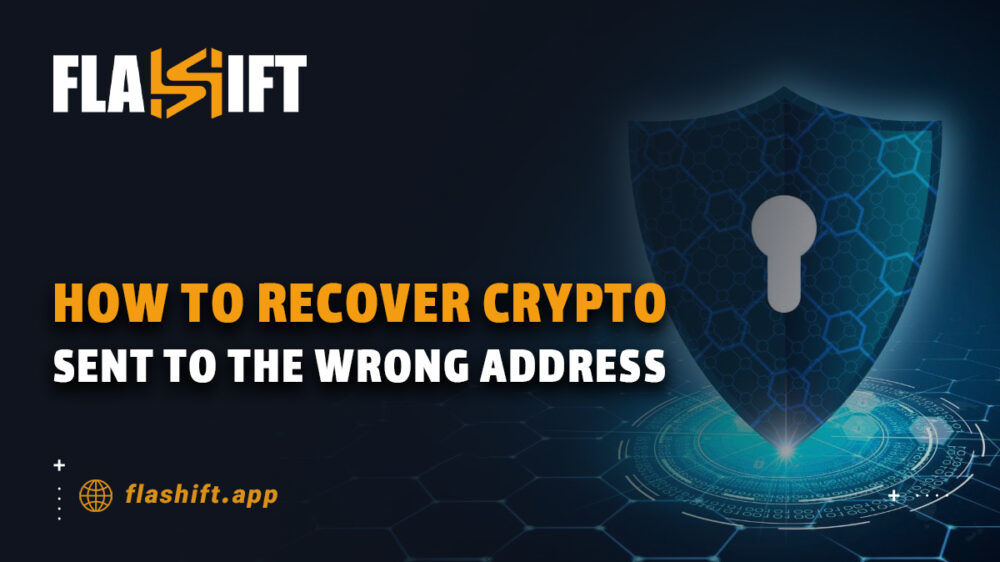Mistakes happen, especially in the fast-paced world of crypto transactions, and sending crypto to the wrong address is a common, yet stressful, error. Unlike traditional banking, crypto transactions are irreversible, which raises the question—can anything be done to recover lost funds?
While it can be difficult and sometimes impossible to recover crypto sent to the wrong address, there are specific steps you can take to increase your chances. This guide explores what to do if you find yourself in this situation and how to avoid making such mistakes in the future.
How to Recover Crypto Sent to the Wrong Address
If you accidentally send cryptocurrency to the wrong address, the transaction will usually be irreversible. A blockchain network like Bitcoin or Ethereum maintains a decentralized and irreversible ledger, and once a transaction is committed, reversing it is not feasible. The money becomes routed to the address given, and if the address turns out to be erroneous—either through typo, crypto wallet address mistake, or sent to a completely unrelated address—it is not possible to recover unless in specific conditions.
If the address is owned by another user or exchange, they may be able to recover the funds, but this varies with the platform and internal procedures. But if the incorrect address is an invalid one or part of an inactive wallet, the crypto may be lost forever. Double-checking the recipient’s address and using the right tools to confirm transactions are correct before sending crypto is advisable.
Can You Recover Crypto from an Incorrect Transaction?
It is generally difficult to recover crypto from an incorrect transaction, and in most cases, impossible since blockchain transactions are irreversible. Once a transaction has been confirmed and added to the blockchain, it can’t be reversed. However, there are a few instances where recovery is possible, although they are rare and not guaranteed:
- Sending to the Wrong Address on an Exchange: If you mistakenly send crypto to an exchange’s wallet address but not your own, the exchange may be able to help if you provide transaction details and they can track the funds. Some exchanges have internal processes for handling misdirected funds, but they are usually specific and require immediate action.
- Sending to an Address You Control: If you send crypto to an address that you control (e.g., a wallet you own but didn’t intend to use for that particular transaction), you might be able to recover the funds by accessing that wallet.
- Sending to an Active Address: If you sent the crypto to an address owned by someone else (e.g., a friend, a business, or a service), they may be able to return the funds if you contact them quickly and they agree to help.
In most cases, if the wrong address is an inactive or non-existent wallet, there is no way to recover the funds. To prevent this, always double-check the address before sending any crypto.
Steps to Take if You Sent Crypto to the Wrong Address

If you’ve sent crypto to the wrong wallet address, taking prompt and systematic action can sometimes help recover your funds. Here are the steps you should follow:
-
Check the Transaction Details
First, verify the transaction on a blockchain explorer (like Etherscan or Blockchair) by entering your transaction hash. This allows you to see the details of the transfer and confirm the destination address. Double-check if you sent the crypto to the wrong address and whether it’s a valid one.
-
Identify the Wallet Destination
If the funds were sent to an exchange, wallet service, or a platform that you or the recipient control, there may be hope for recovery. If the transaction is to a personal wallet or address you own but in error, you may have access to your funds. If it’s sent to an inactive or non-existent address, recovery is unlikely.
-
Contact the Recipient
If the crypto was sent to someone else’s wallet (whether by mistake or otherwise), try to reach out directly. If it was sent to a platform or exchange, contact their support team immediately with all relevant transaction information. Many exchanges may allow you to recover funds if they are aware of the situation and can track the transaction.
-
Reach Out to the Platform (if applicable)
If you mistakenly sent funds to an exchange wallet or a service address, contact their customer support as soon as possible. Provide them with all transaction details, including the transaction ID and the address you intended to send funds to. Some exchanges have procedures for handling misdirected crypto transactions, though this depends on the platform.
-
Monitor the Transaction
If the transaction is irreversible, monitor the situation through blockchain explorers and continue trying to get in touch with the relevant parties. In cases where recovery is impossible, there may be little else you can do, but having the transaction info on hand can help if future developments arise.
-
Learn from the Experience
While you may not always be able to recover your funds, use this as an opportunity to improve your transaction process. Always double-check the wallet address before sending any funds, and consider using address whitelisting or a small test transaction when sending large amounts.
Unfortunately, due to the decentralized and irreversible nature of blockchain, recovery is not always possible, but acting fast and contacting the right people increases your chances.
Preventing Future Mistakes in Crypto Transactions

1. Double-Check the Wallet Address
Before sending any crypto, always verify the wallet address. Even a small typo can result in lost funds. Double-check the first and last few characters of the address, and if possible, use copy-and-paste methods to avoid human error. Many wallets and exchanges now offer QR codes to make this process easier and more accurate.
2. Use Address Whitelisting
Some platforms allow you to whitelist trusted addresses. This means you can only send crypto to pre-approved addresses, reducing the risk of sending funds to the wrong wallet. Enable this feature on exchanges or wallets that support it to further protect your assets.
3. Conduct Small Test Transactions
When sending a large amount of crypto for the first time to a new address, consider conducting a small test transaction first. This minimizes risk and ensures that the transaction goes through successfully before transferring the full amount.
4. Enable Two-Factor Authentication (2FA)
For added security, enable two-factor authentication (2FA) on your exchange and wallet accounts. While this won’t prevent address mistakes, it will add an extra layer of protection in case of unauthorized access to your account.
5. Use a Trusted Platform
Stick to well-known exchanges and wallets that have a solid reputation for security and reliability. Established platforms often have safeguards like transaction confirmations or alerts that can help prevent accidental errors, and they may offer better customer support in case mistakes happen.
6. Be Cautious with Copy-Pasting Addresses
While copying an address is faster and more convenient, it can be risky if you’re copying from an untrustworthy source. Always verify the address before sending and avoid copying from unfamiliar or potentially fraudulent websites.
7. Keep Backup Records
If you’re handling large sums of crypto or frequently transferring funds, it’s essential to maintain a backup of addresses, transaction details, and wallet keys in a secure manner. This can help you troubleshoot or seek assistance from support teams more effectively if you make an error.
By following these precautions and staying vigilant, you can significantly reduce the chances of sending crypto to the wrong address and prevent costly mistakes in the future.
Conclusion
It is hard, if not impossible, to reclaim crypto transferred to a wrong address due to the irreversible nature of blockchain transactions. All the same, acting in time and reaching out to the right authorities, e.g., exchanges or the recipient of the transaction, can raise your chances of recovery. While recovery is not assured, the experience reminds one of the importance of caution and vigilance when dealing in crypto transactions.
By implementing preventive measures like double-checking addresses, test transactions, and enabling security options like address whitelisting, you can reduce the likelihood of making the same mistakes again and again and navigate the complexities of crypto more effectively.
Swap BTC to USDT-TRC20 right now!
FAQ
- Can I recover crypto sent to a random or non-existent address?
No, if the crypto is sent to an address that doesn’t exist or has no private key owner, the funds are generally lost forever. Blockchain transactions are irreversible.
- What should I do if I sent crypto to the wrong exchange address?
Contact the exchange’s support team immediately with the transaction details. Some exchanges may assist in recovering funds if the address belongs to their platform and is traceable.
- Is it possible to recover crypto sent to the wrong wallet if it’s controlled by someone else?
If you’ve sent crypto to someone else’s wallet, you’ll need to reach out directly to the recipient and request the funds back. If the recipient agrees, they can return the crypto.
- Can blockchain explorers help in recovering crypto?
Blockchain explorers can help you track where the crypto went by showing transaction details, but they can’t aid in recovery. They only provide transparency on the movement of funds.
- How can I prevent sending crypto to the wrong address in the future?
Use address whitelisting, double-check addresses before sending, start with small test transactions, and ensure you’re using secure and trusted platforms to minimize the risk of making similar mistakes.







